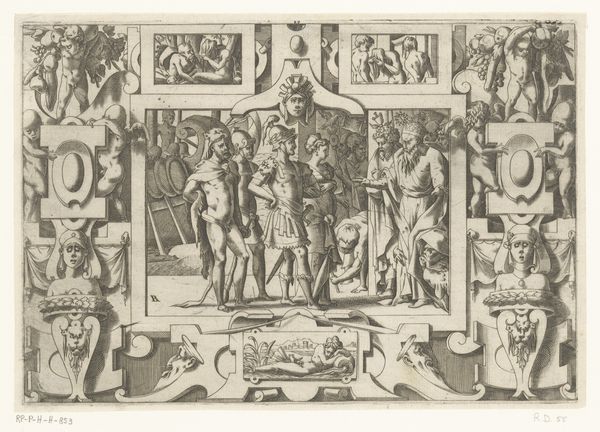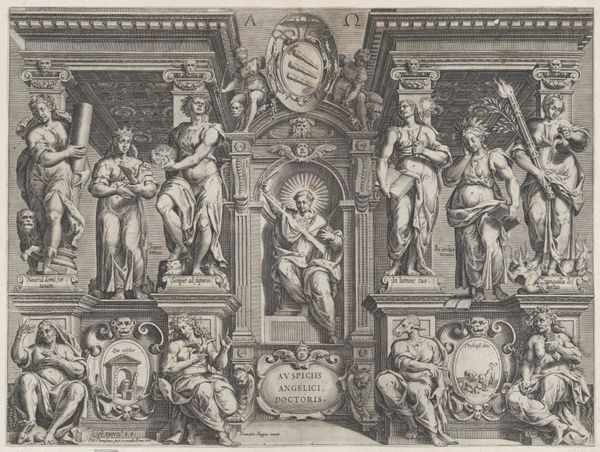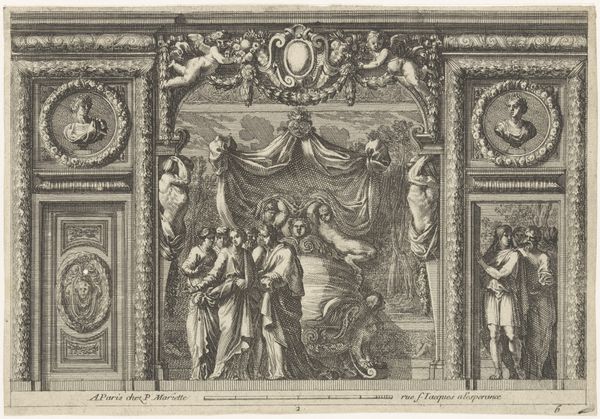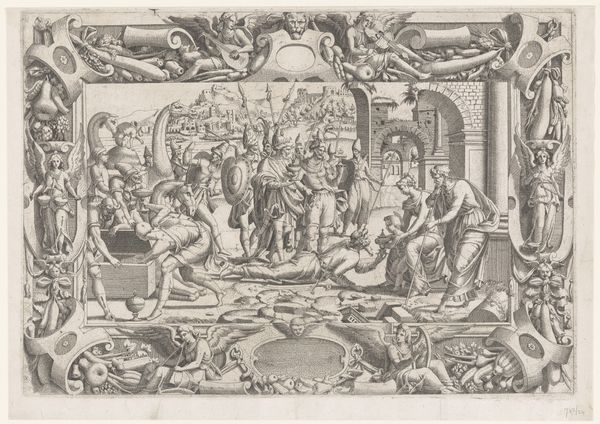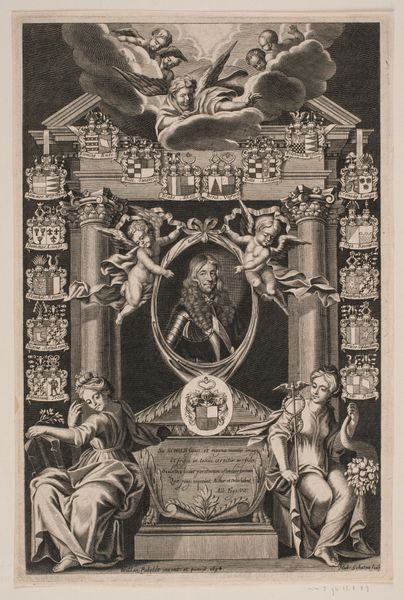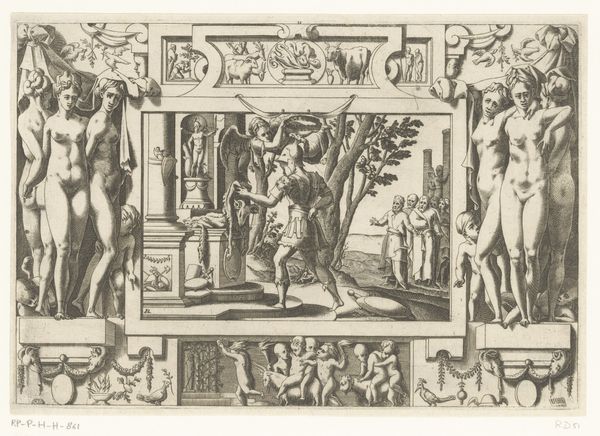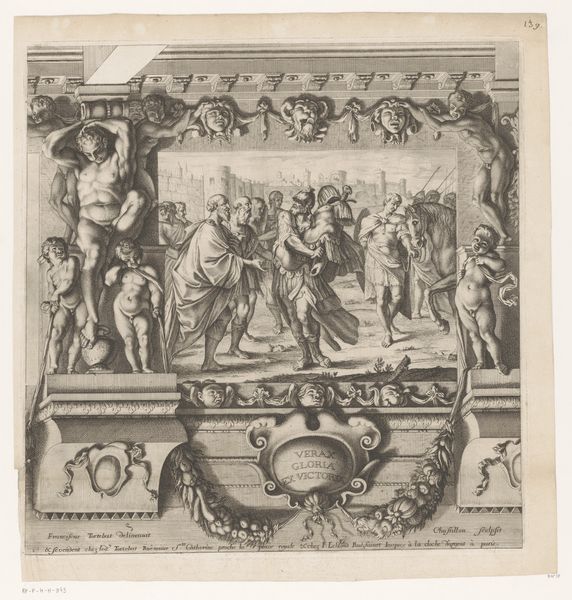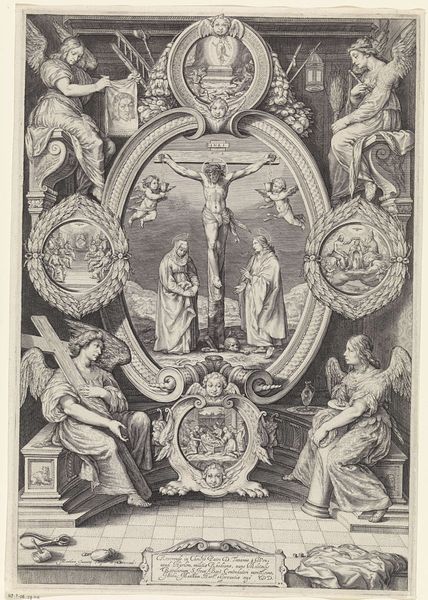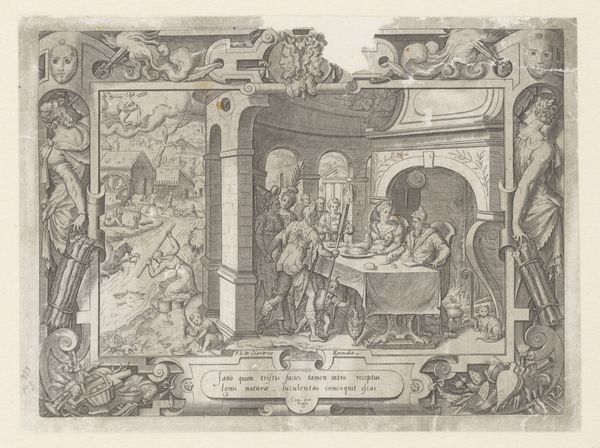
Phrixus en Helle, beschuldigd van Ion's misdaad, verschijnen voor het orakel 1563
0:00
0:00
drawing, print, ink, engraving
#
drawing
#
allegory
#
narrative-art
#
pen drawing
# print
#
pen illustration
#
old engraving style
#
mannerism
#
figuration
#
ink line art
#
ink
#
line
#
history-painting
#
academic-art
#
engraving
Dimensions: height 160 mm, width 236 mm
Copyright: Rijks Museum: Open Domain
Editor: Here we have Renè Boyvin's 1563 engraving, "Phrixus en Helle, beschuldigd van Ion's misdaad, verschijnen voor het orakel," currently held at the Rijksmuseum. The sheer number of figures is quite impressive. What stories do you think this piece tries to tell? Curator: It's tempting to only read this engraving through the lens of Greek mythology. However, look closely. This scene, while drawing upon classical narratives, presents a fascinating study of power and societal accusation in the 16th century. What does it say about whose voices are heard and believed, and how accusations impact family structures and governance? Editor: I see what you mean! There's a power dynamic on display that feels timeless, not just specific to the myth. It makes you wonder about similar dynamics in other historical eras. Curator: Exactly! Consider the broader context. This was created during a period of religious and political upheaval. Boyvin presents a very specific narrative framing power and how justice may or may not work for everyone in the community. Are certain figures privileged and protected while others are cast as scapegoats, echoing societal tensions? Editor: That's a compelling interpretation. It encourages a conversation about social justice. So, seeing Phrixus and Helle accused isn't just a retelling of a myth. It is also an artistic and very political question, pointing to contemporary events. Curator: Precisely. Art always reflects and refracts the world in which it's created. Seeing beyond the surface narrative helps us connect with the enduring issues facing all. Hopefully, this way, history inspires a vision to imagine more just futures. Editor: Absolutely. Thanks for shedding light on this piece. I'm now considering so many things I wouldn't have thought about just looking at it. Curator: It's been a pleasure. The point is to never stop asking questions, to situate art within its web of social, cultural, and political meanings.
Comments
No comments
Be the first to comment and join the conversation on the ultimate creative platform.
